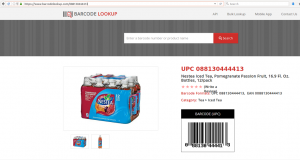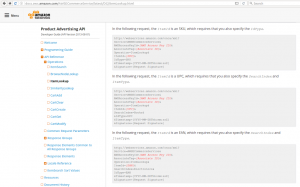In this article, I will attempt to set up some of the background for a series of articles for an eventual discussion on unique item management.
Part Numbers
The part number system is one of the most misunderstood parts of a system of material identification. It is almost entirely based on best practices, although there are some rules for certain types of material. Perhaps the best article I have seen explaining part numbers is the Wikipedia page at https://en.wikipedia.org/wiki/Part_number, which is a miracle it ever got written so well with exactly zero references.
 |
| Example UPC Lookup Results |
Universal Product Cataloging Systems
Beyond the wild wild west of the part number system, attempts have been made by industry to standardize product identification. What is interesting is that we are exposed to these every single day. Even if a product has a part number, if it is sold somewhere, it is almost guaranteed to have a universal product number or equivalent code.
One example is the ISBN system used for books and other media. ISBNs are nationally assigned, meaning that each country has an authority that manages them. You can look up an ISBN freely many different ways, such as via http://www.isbnsearch.org/. If you are a developer, there are Application Programming Interfaces (APIs) such as Amazon Web Services that allow seamless integration with your application. There are also databases that participate in the open-data initiative, such as the Google Books API (https://developers.google.com/books/docs/v1/using).
The Universal Product Code (UPC) is probably the identifier that we see the most. It is in almost every product we buy. The UPC is assigned by the product manufacturer or designer, although that is not always necessarily the case since any vendor with a vendor code can procure a UPC. It is a catalog identifier at the product level, meaning, for example, that a UPC for a 16 oz. bottle of Nestea Pomegranate Passion Iced Tea would be the same UPC found on every single bottle of the same product, regardless of what store is selling it. The UPC system is managed by an international non-profit organization called GS1. Just like the ISBN, the UPC can be freely searched via many databases such as the following: https://www.barcodelookup.com/.
There is also a system called EAN, which is the European Article Numbering system. The EAN is also managed by GS1 and it is functionally used in an identical way to the UPC.
You might have also heard of GTIN (https://en.wikipedia.org/wiki/Global_Trade_Item_Number), which is the Global Trade Item Numbering system. This is an umbrella construct, also managed by GS1, that includes the UPC, EAN, and other variations of universal product catalog identifiers.
There you have it. Just about every product that is sold in stores throughout the world is covered by an ISBN, UPC, EAN, or GTIN, and all those identifiers are publicly and freely searchable.
 |
| Amazon Web Services (AWS) Product Lookup API |
SKUs
Now we get down to the retail level. Stock Keeping Unit (SKU) numbers are routinely confused with other product catalog identifier numbers. The key thing to keep in mind is that SKUs are internal to a supplier and do not mean anything to anyone else other than the entity managing the stock. However, the confusion is so prevalent that many retailers (particularly when interfacing with customers) use SKUs interchangeably as product identifiers. The Amazon Web Services (AWS) API even allows developers to search for SKUs. Amazon being the giant that they are, a SKU search in their API is pretty close to a universal SKU search.
Next article: the Federal Stock Number system.

